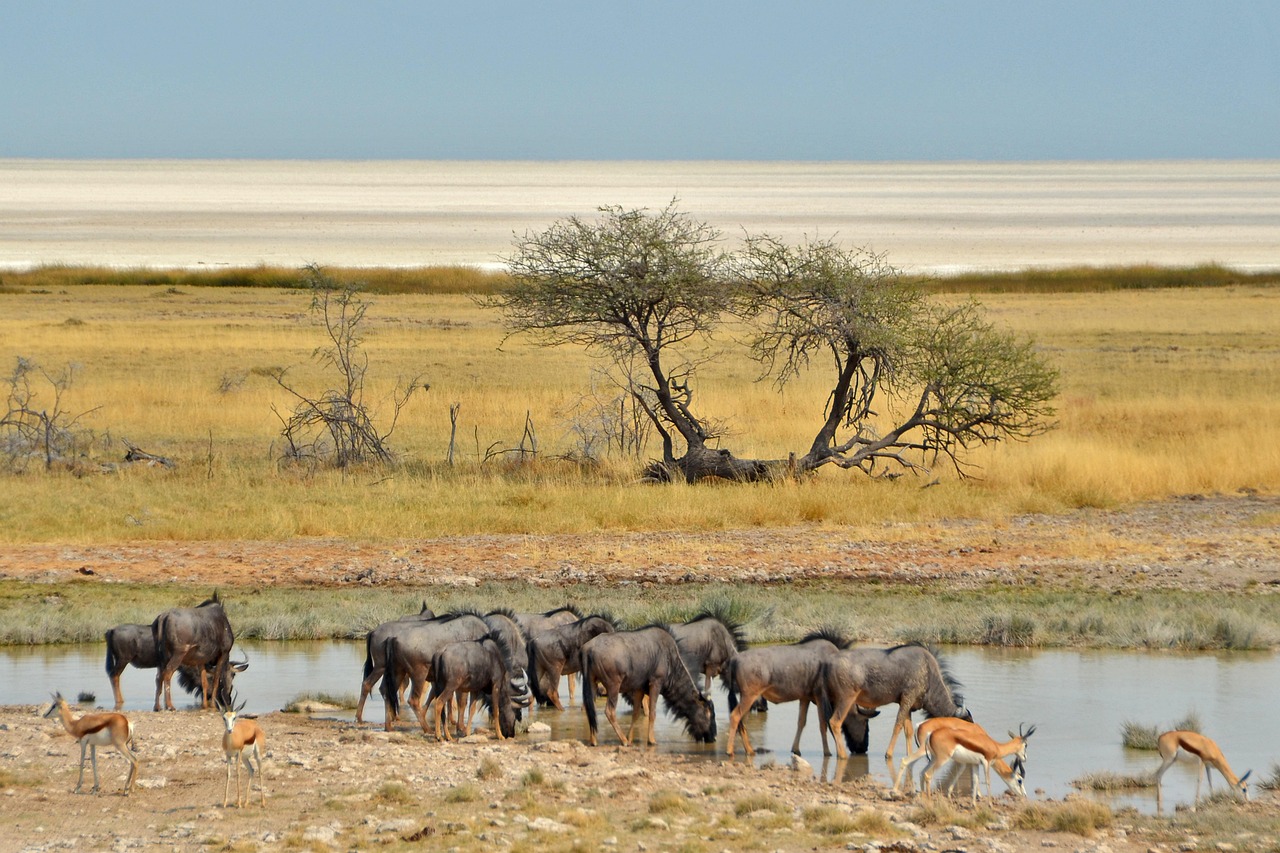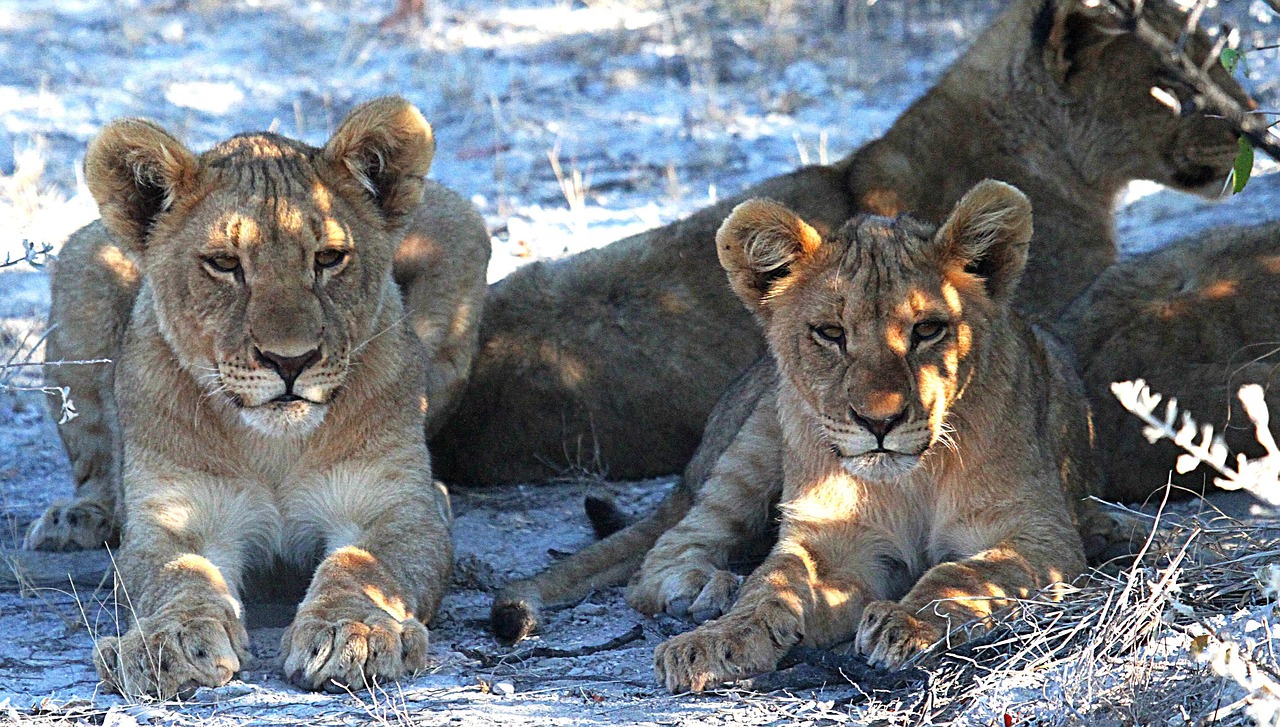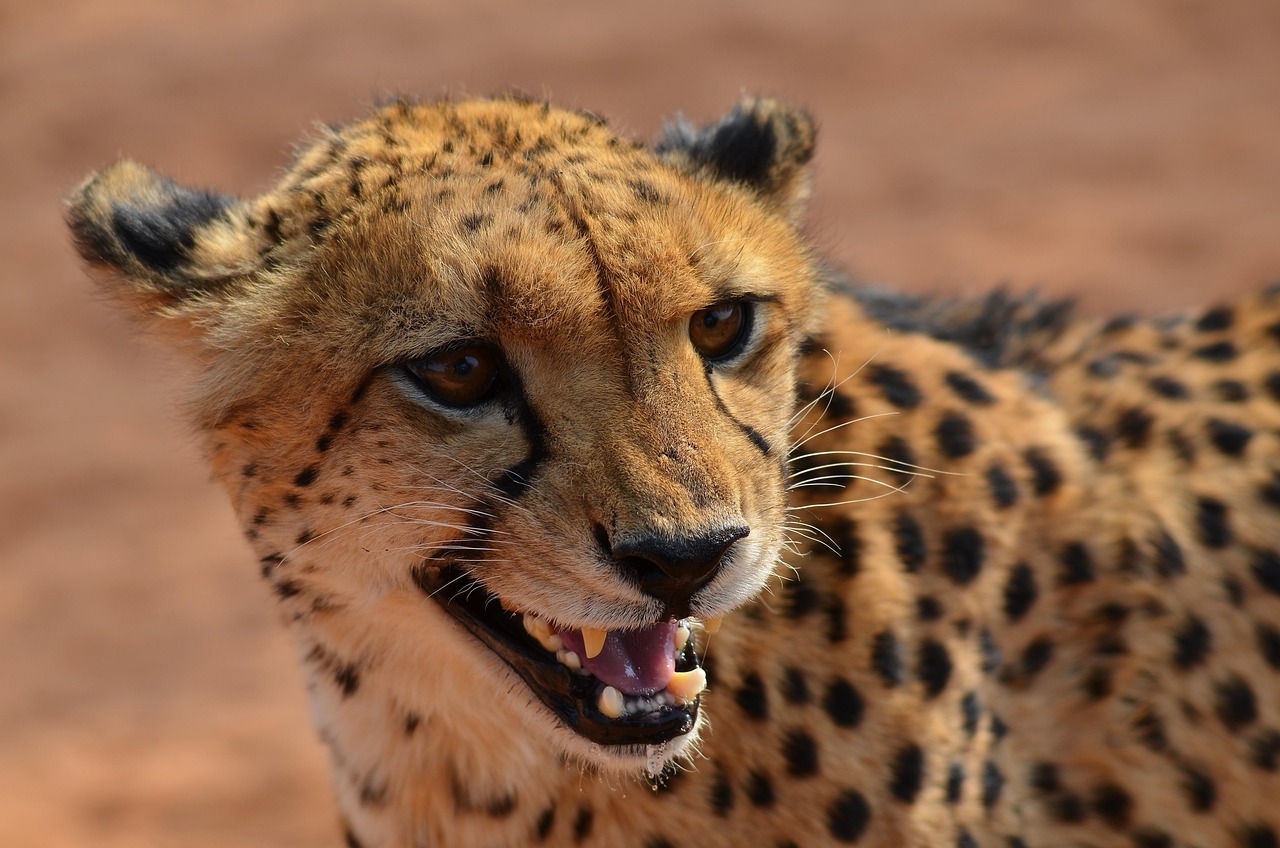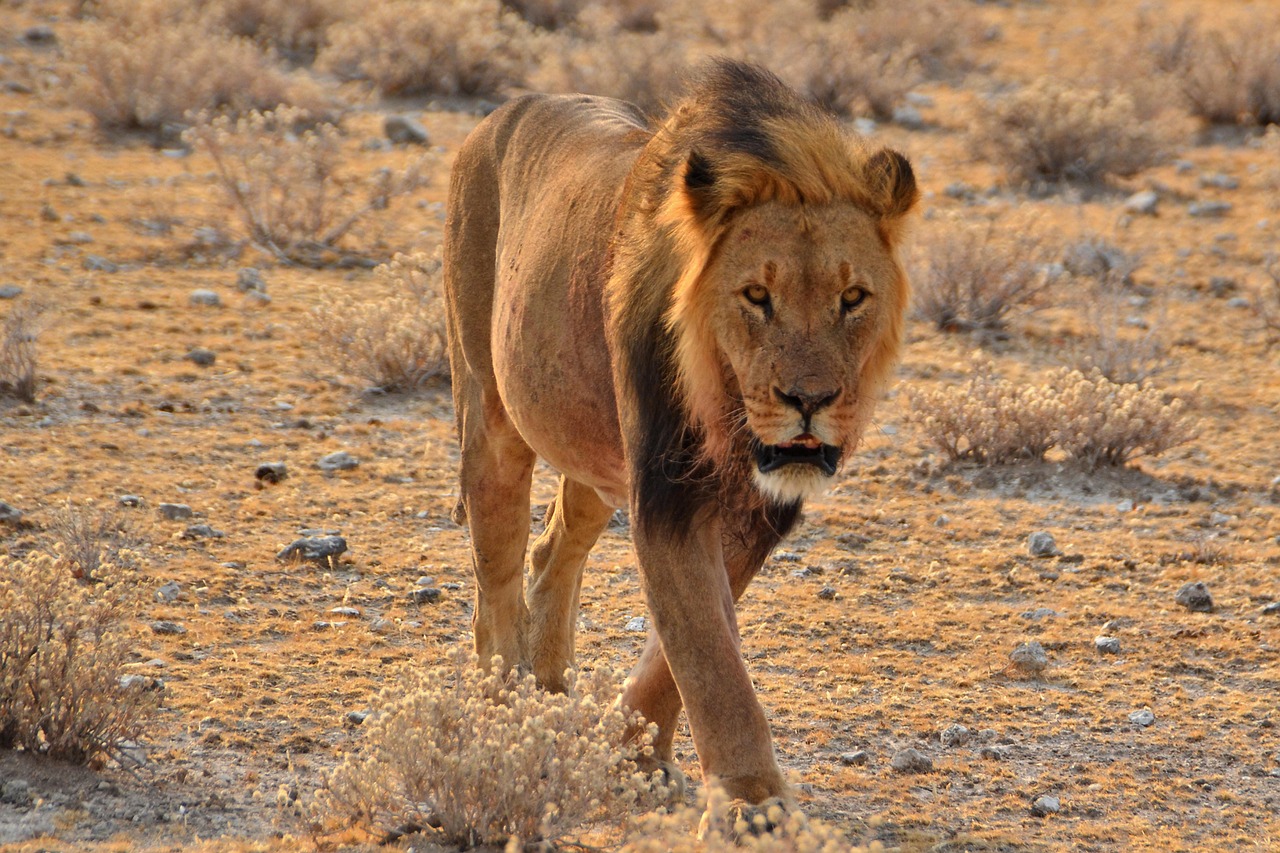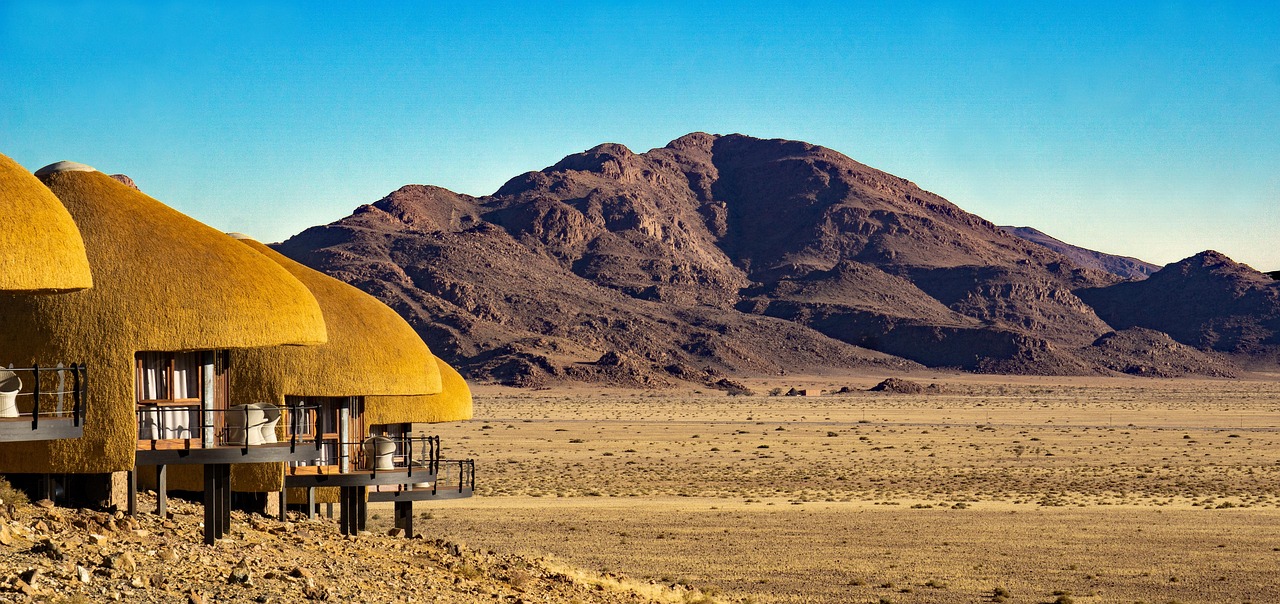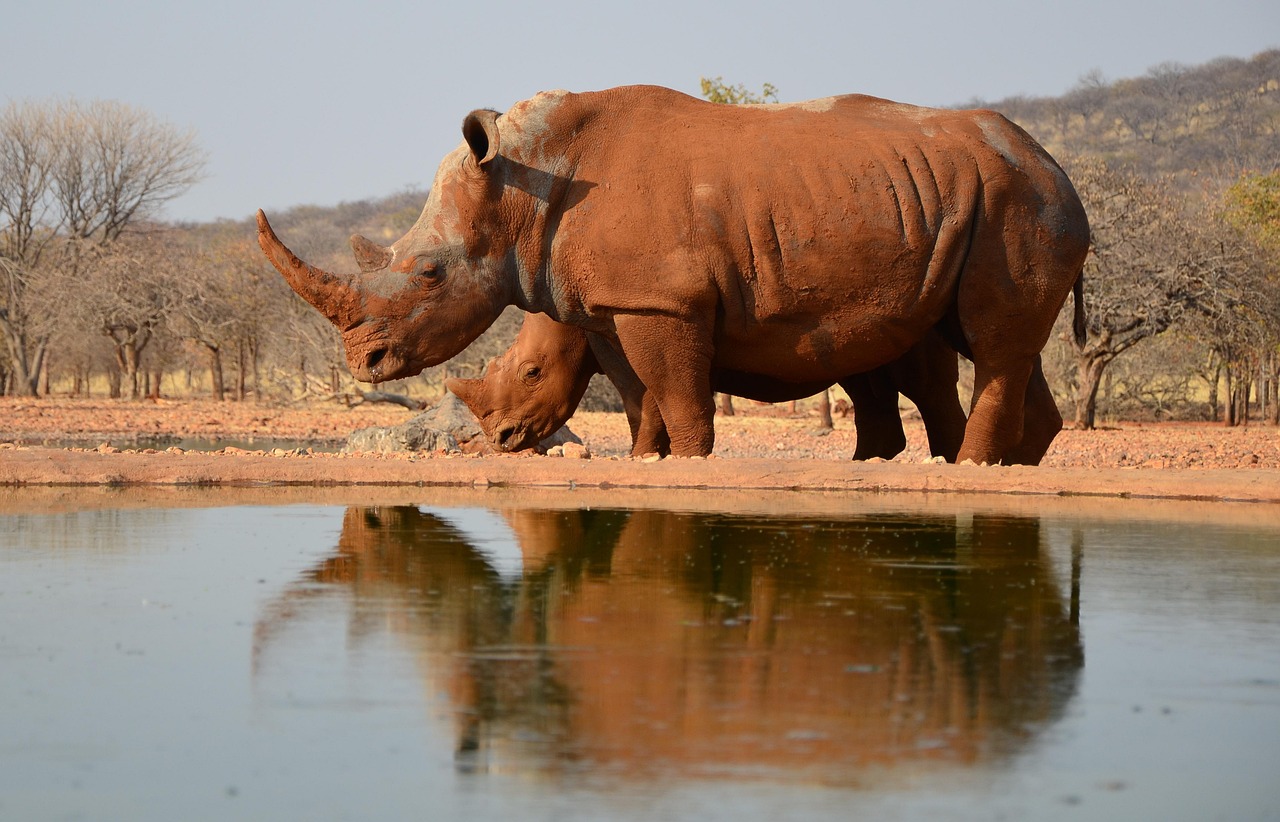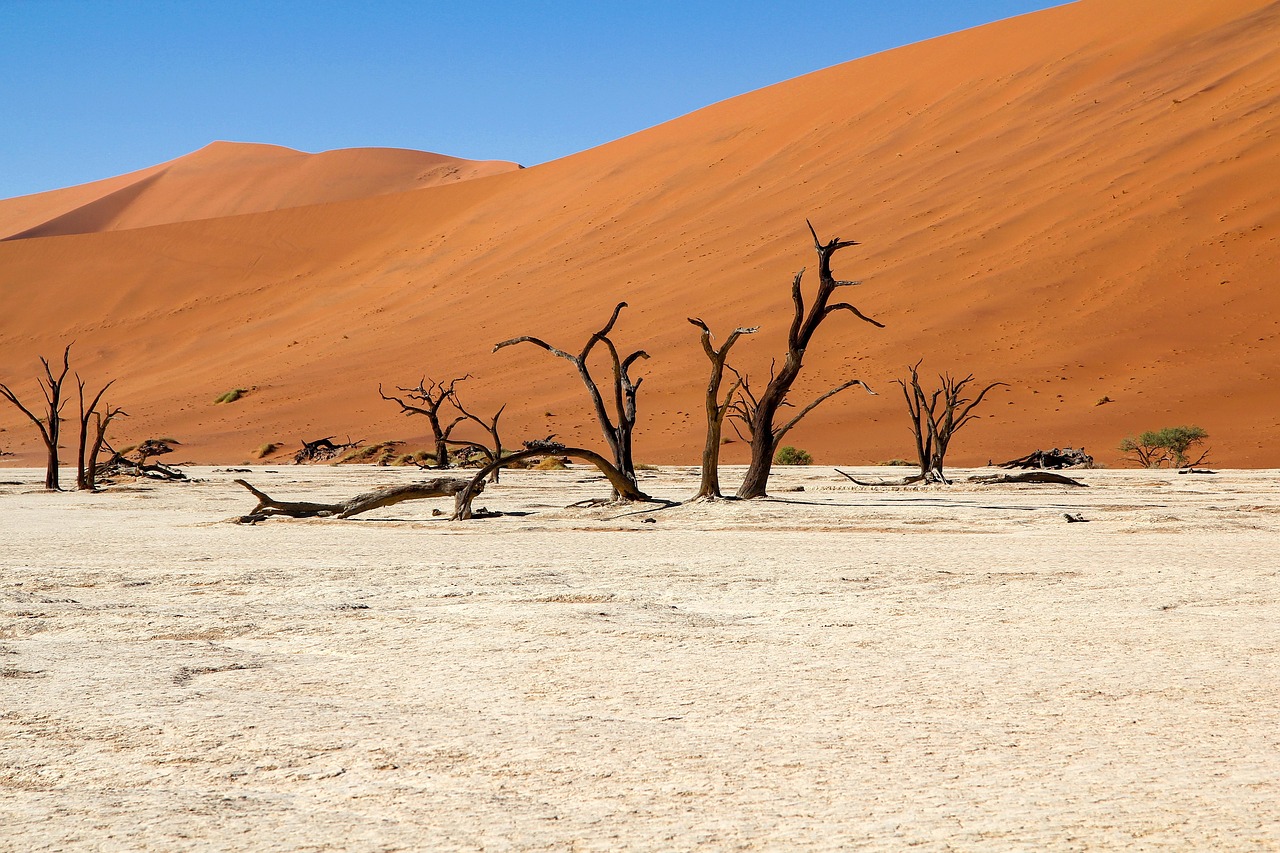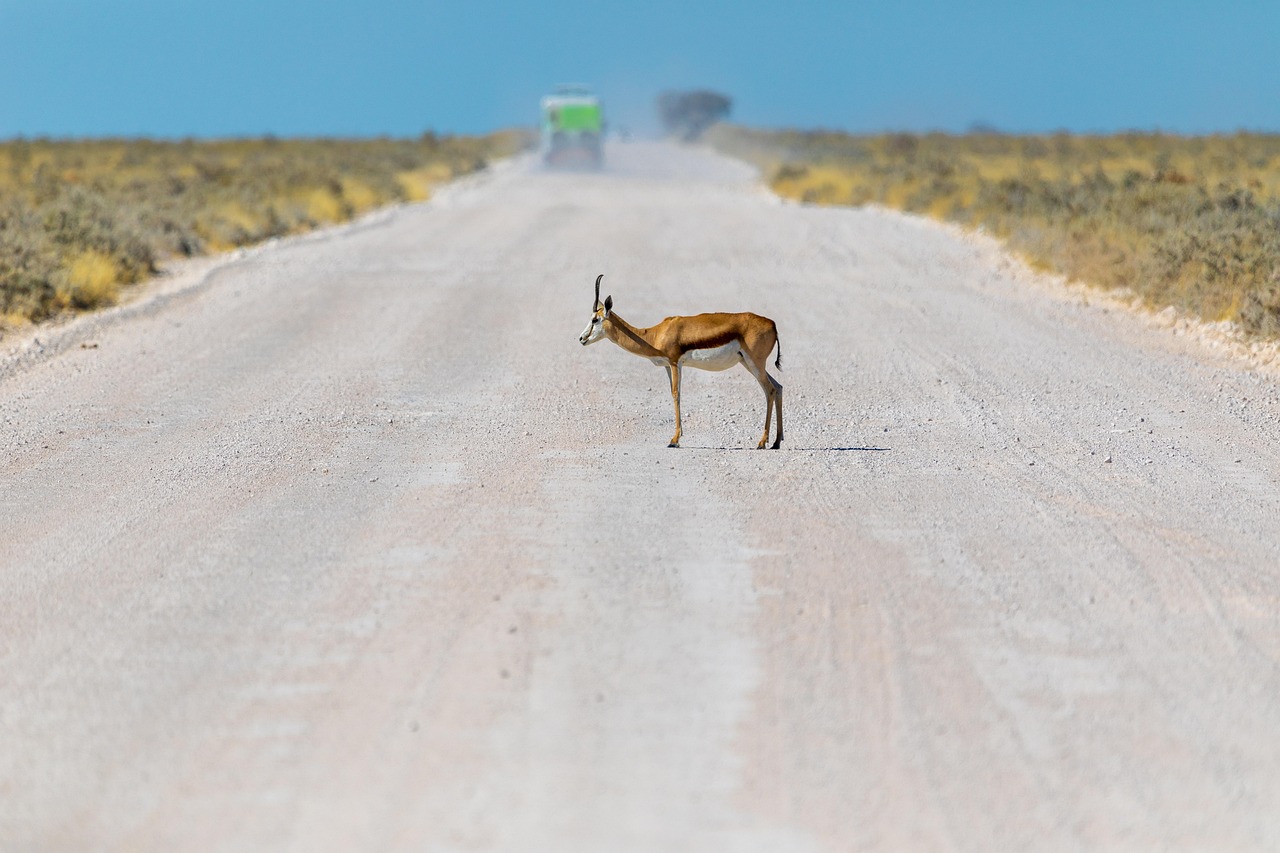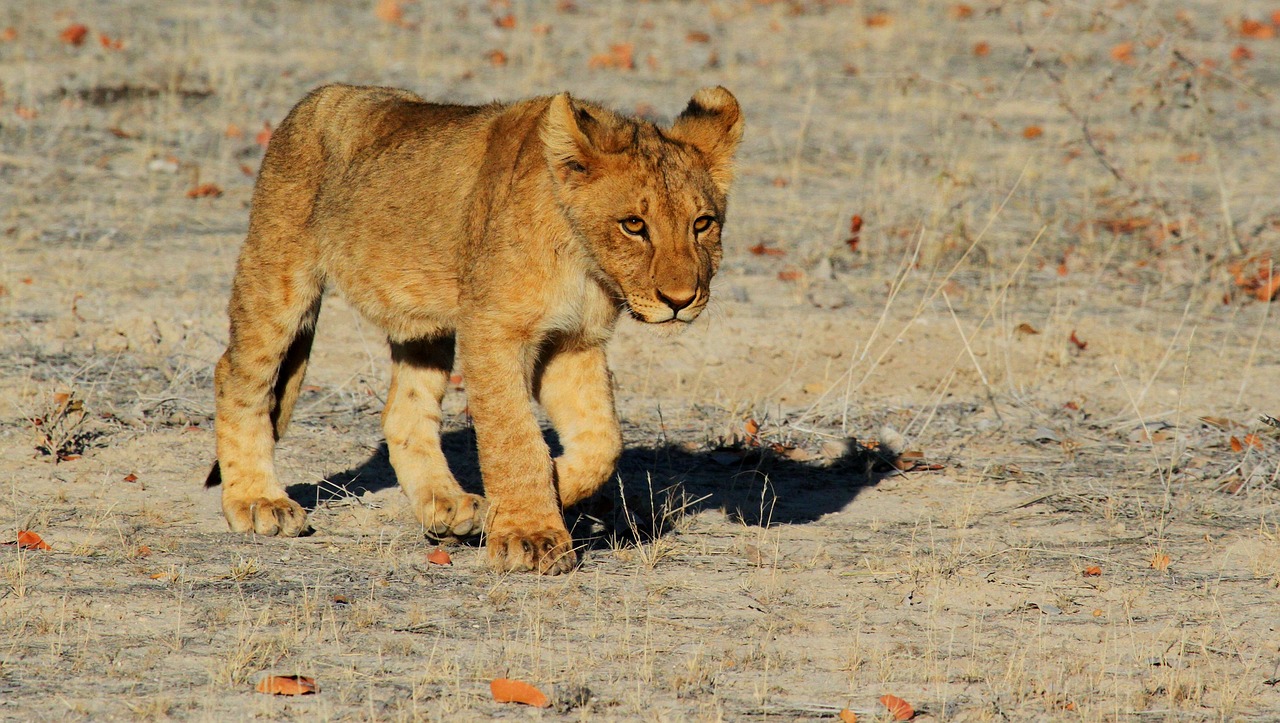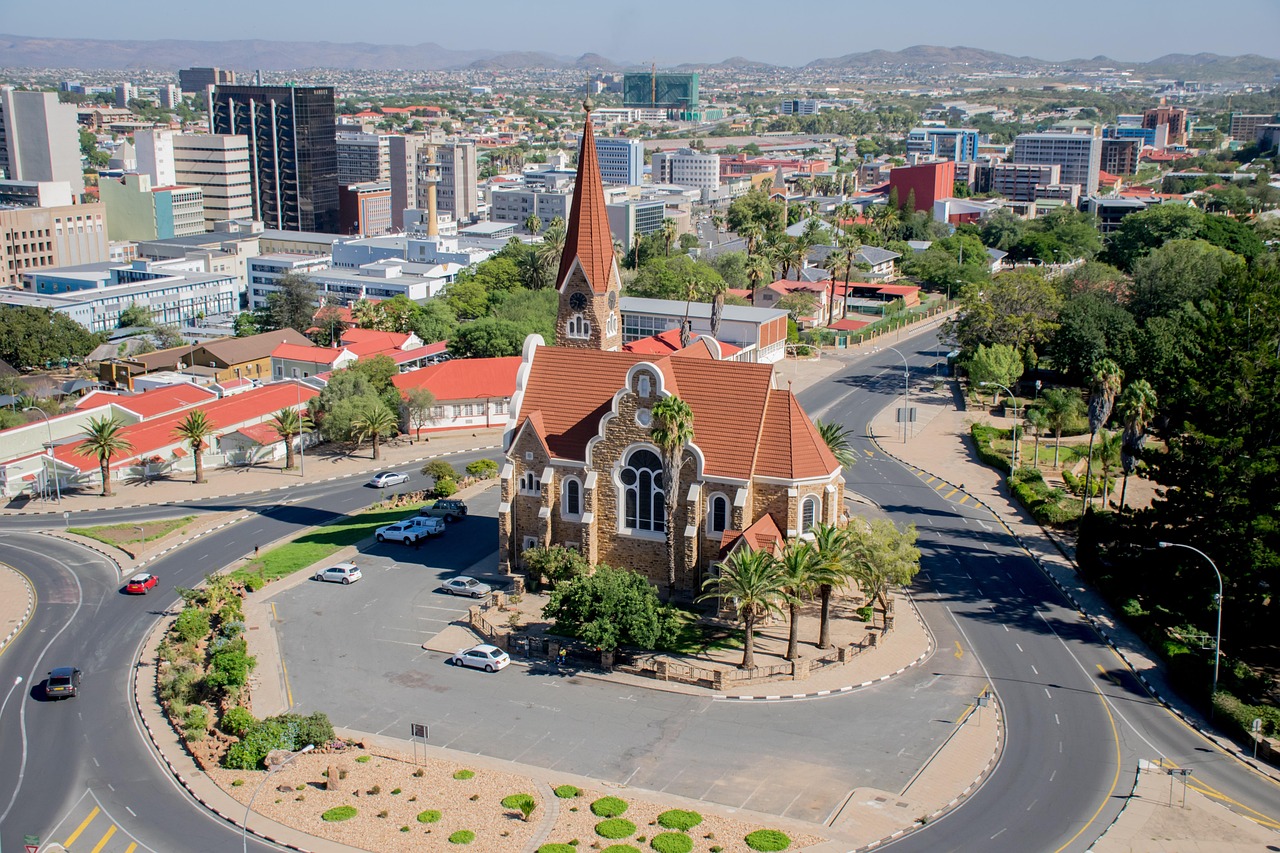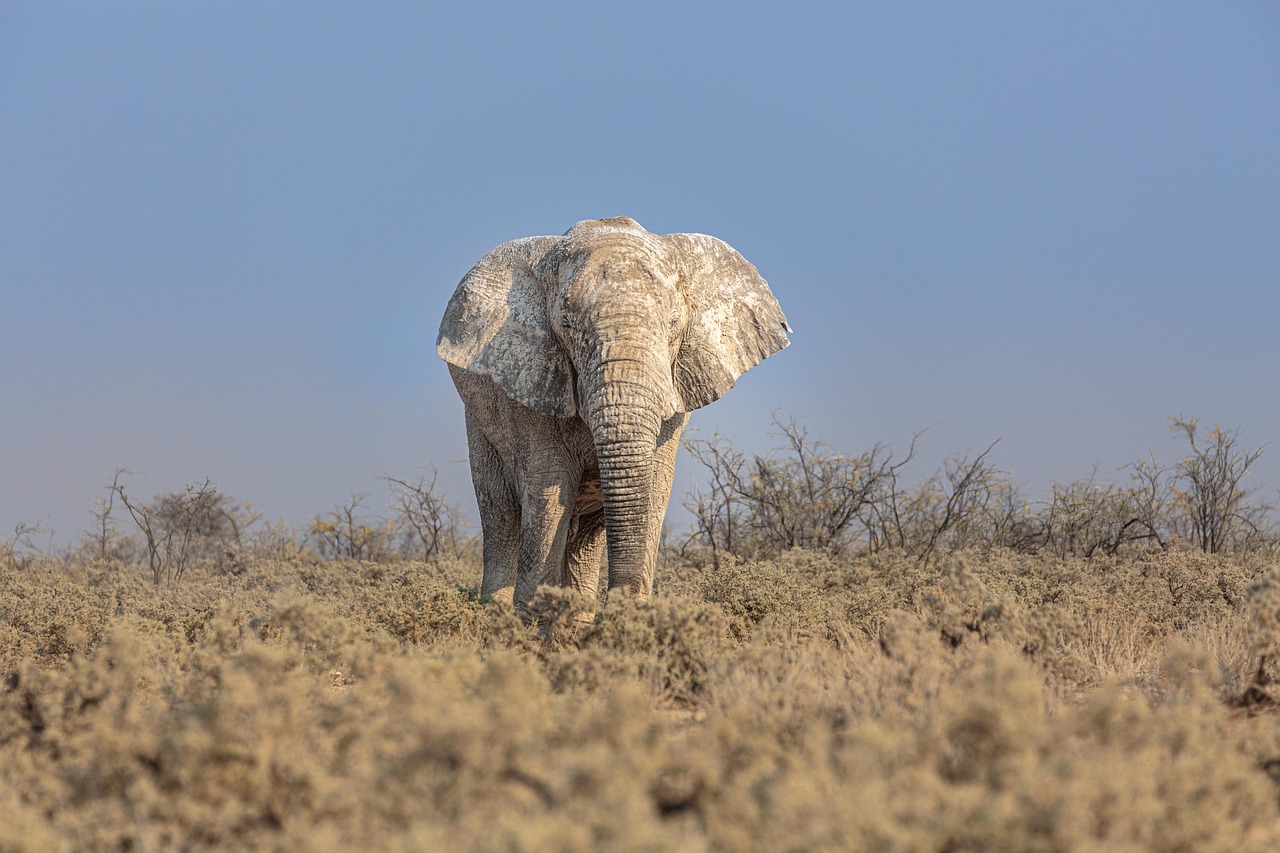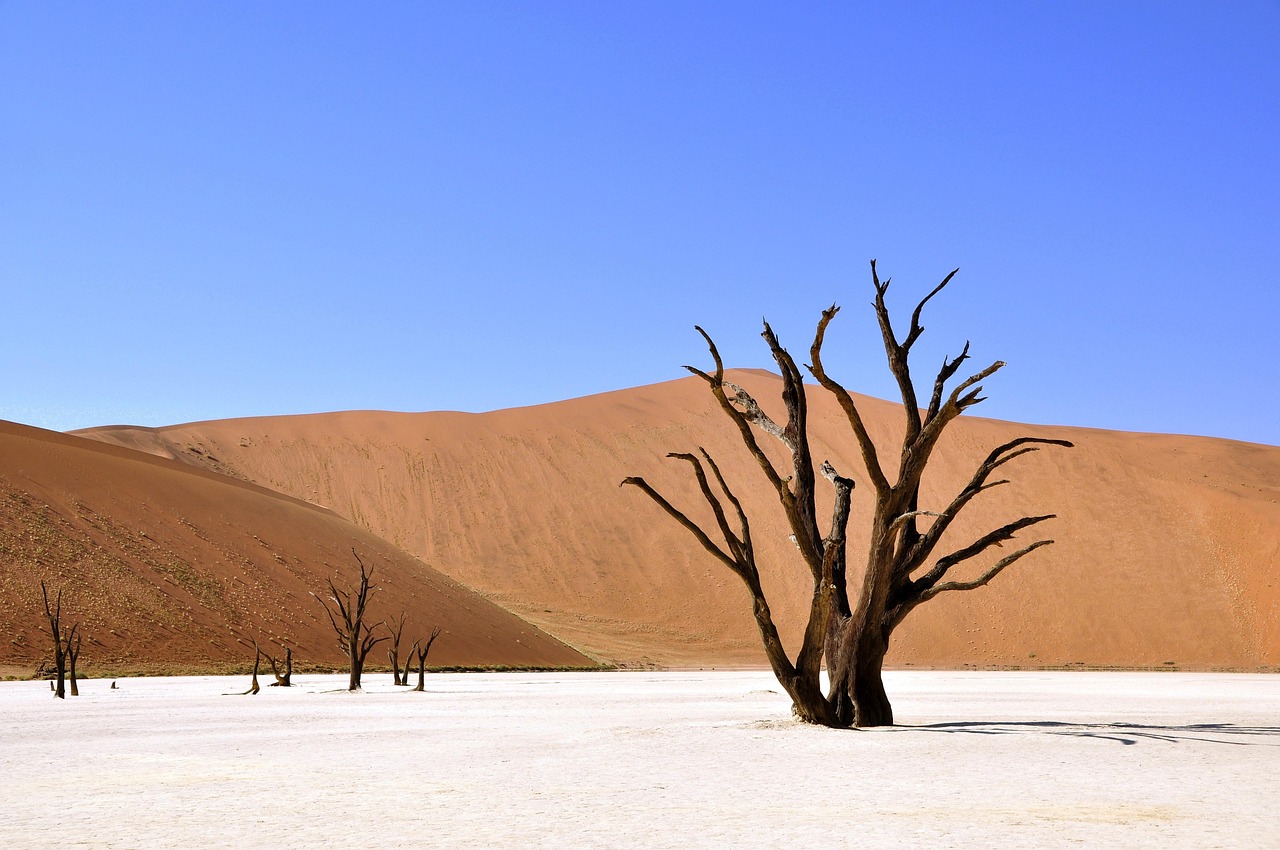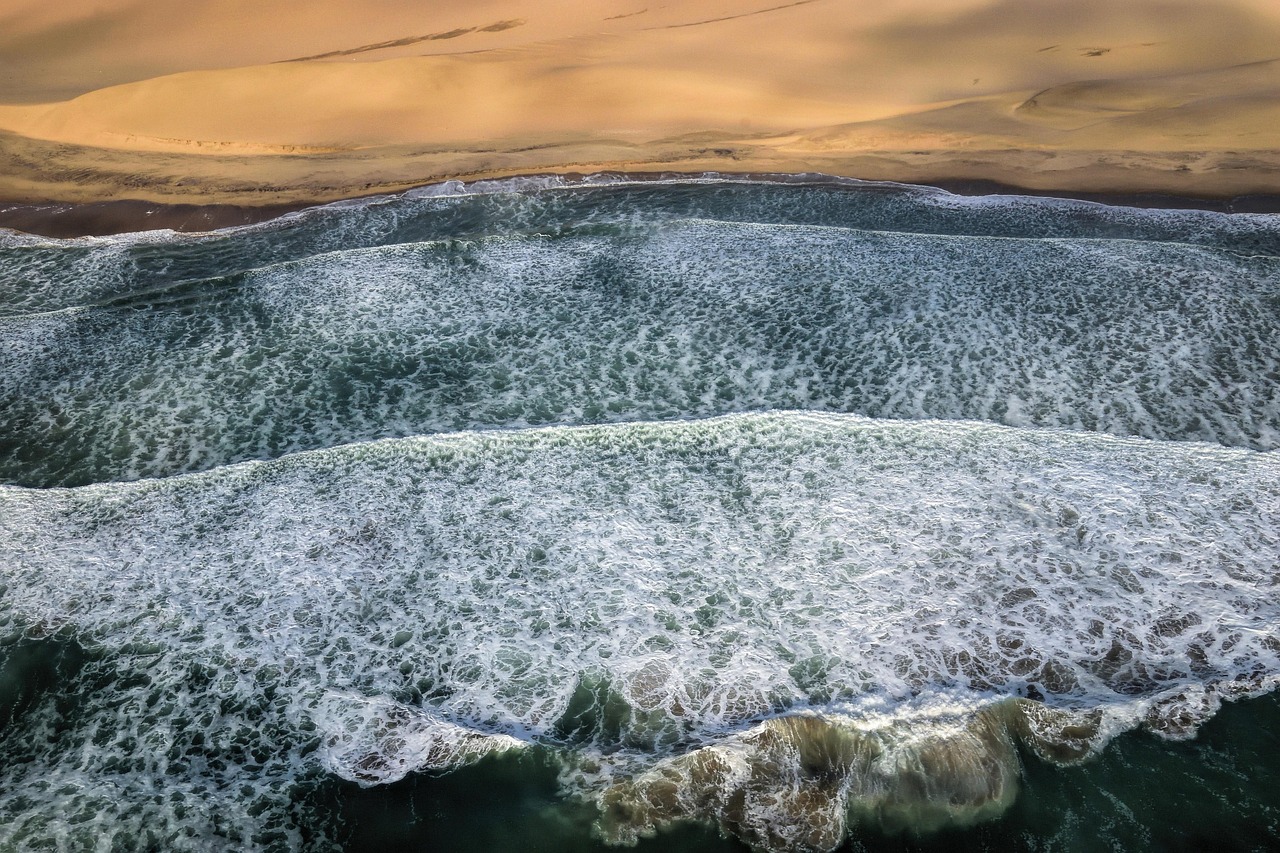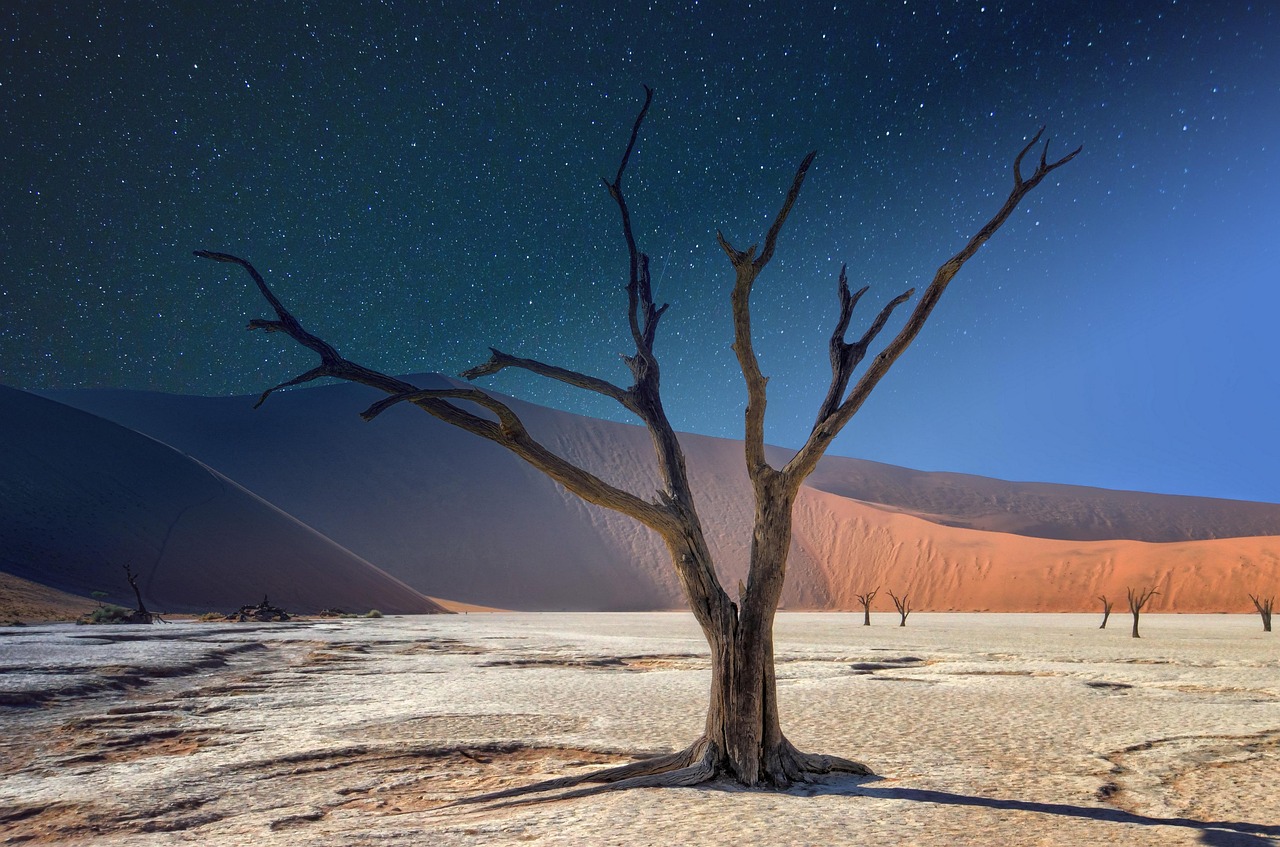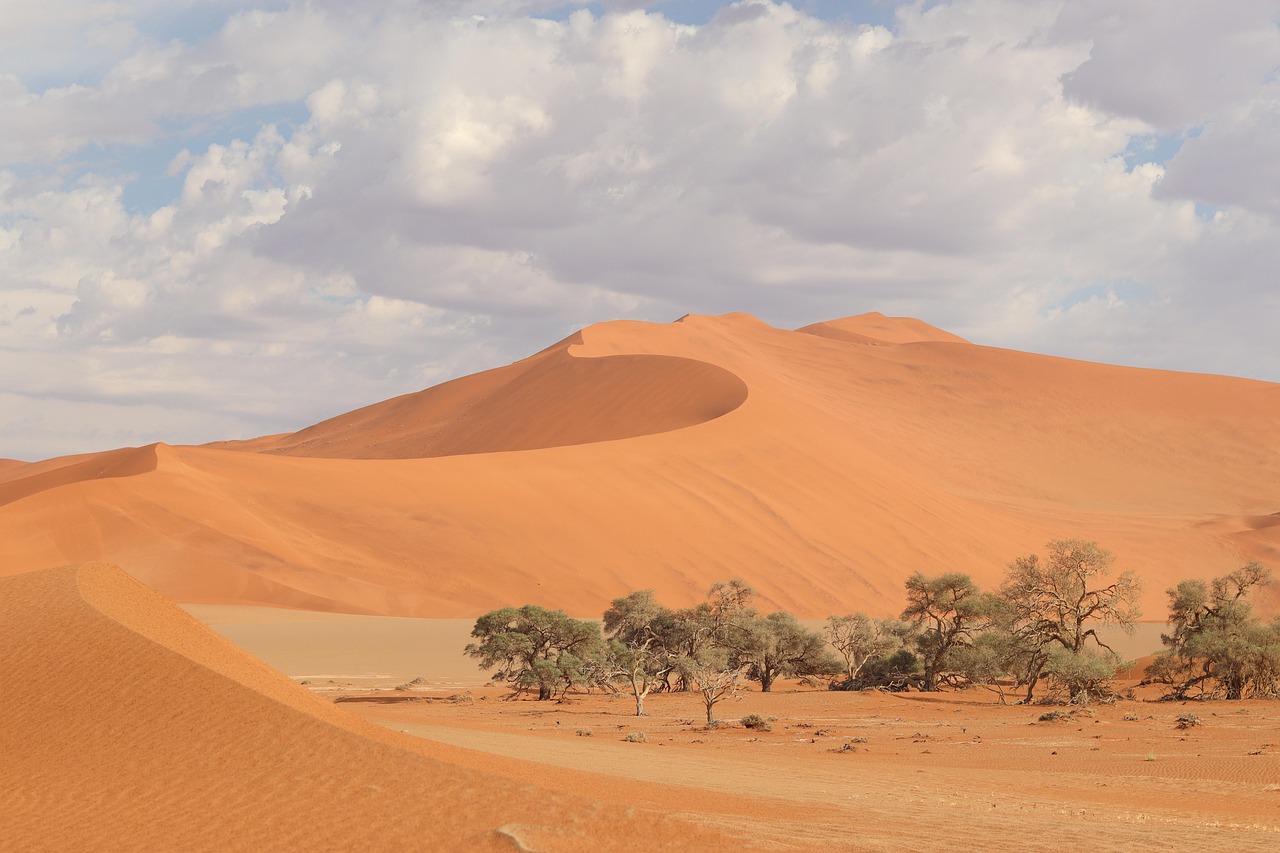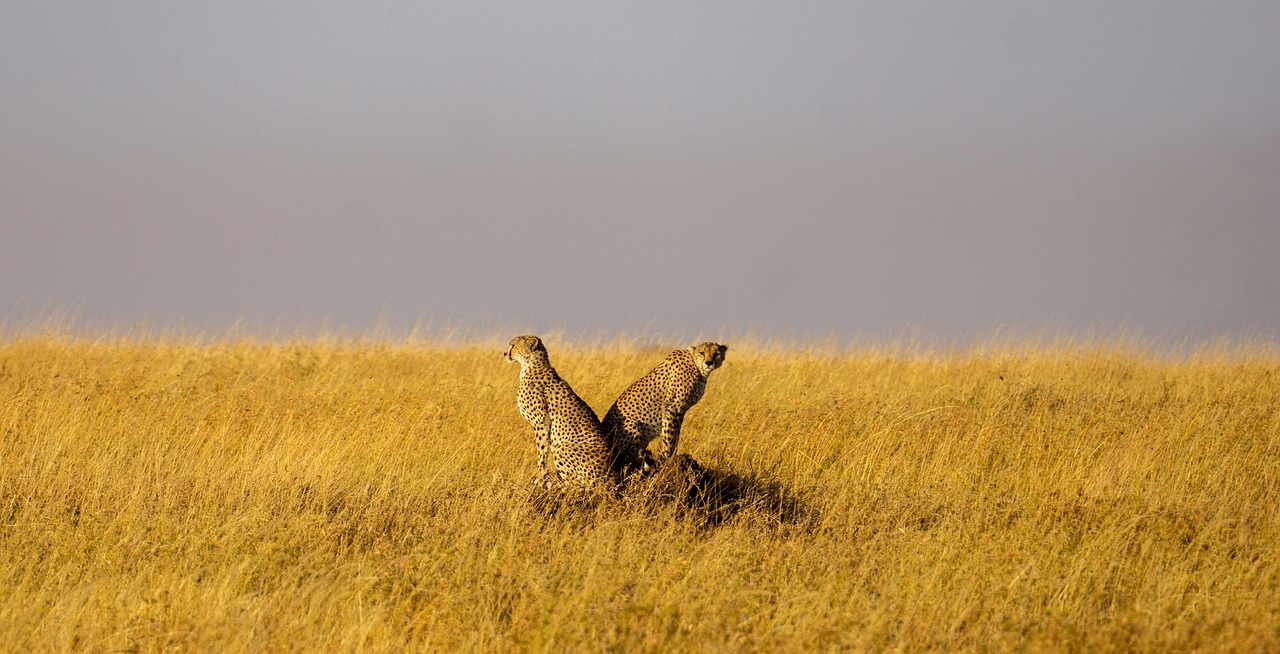
Namibia
Everything you need to know about going to Namibia for a safari. A complete travel guide.Namibia
Overview
A Complete Travel Guide To Namibia.
Everything you need to know before travelling to Namibia for a safari.
Namibia offers safari experiences unlike anywhere else in Africa — wildlife sightings under vast desert skies, dramatic salt pans and towering dunes. Etosha National Park is renowned for its reliable game‑viewing, while desert‑adapted elephants and black rhino roam the dry riverbeds of Damaraland. With its wide range of landscapes and low tourist density, Namibia welcomes both self‑drive visitors and guided safari enthusiasts.
Explore Namibia Below:
Explore other countries:
Continue your safari planning journey across Africa’s top countries
Not sure if Namibia is your perfect fit? Click below to explore and compare other safari countries.
Safety
Everything you need to know about safety in Namibia
Namibia is widely regarded as a safe safari destination, with low rates of violent crime and political stability. In urban centres such as Windhoek or Swakopmund, the primary concern is petty theft—pickpocketing, wallet snatching or car break‑ins. Wildlife areas, including Etosha or Damaraland, are secure from crime but require the usual park precautions and awareness of road hazards.
Expert tip: Always use registered taxi services or hotel shuttles, don’t leave valuables visible in your car, and avoid walking alone after dark in significant towns.
A Deeper Understanding Of Safety In Namibia
Visitors experience few security issues in most wildlife areas—violent crime in national parks and conservancies is rare. The main urban risks are theft, smash‑and‑grab car burglaries and occasional muggings, especially around parking lots or tourist spots like malls. These crimes are most prevalent in Windhoek and other towns. Health and travel authorities, including FCDO, US State Department and Smartraveller, advise exercising standard safety precautions such as keeping valuables out of sight and being alert in public places.
Beyond urban areas, road safety is a greater concern than crime. Many routes are gravel and can be slippery when wet, with a high rate of single‑vehicle accidents caused by speeding or animals on the road. Emergency services and medical care are limited in remote regions—travellers are advised to carry comprehensive insurance that includes evacuation cover.
When visiting lodges or camps, use responsible operators and follow guidance from your host or guide. Female travellers report feeling secure when practising the same prudence used in any global destination.
VISA
Everything you need to know about visas for travel to Namibia
From 1 April 2025, most travellers to Namibia must hold a tourist visa, except nationals of exempt African countries. Eligible visitors may apply online for an e‑visa or obtain a visa on arrival at entry points.
Use the following links to see your visa requirements when travelling to Namibia:
Expert tip: Complete your e‑visa application before your trip—to avoid queues at entry points and ensure smooth arrival.
A Deeper Understanding Of Visa Requirements For Namibia
From 1 April 2025, Namibia requires a paid tourist visa for most nationalities, replacing earlier visa‑free access for over 30 countries, including the US, UK and most EU nations. Eligible travellers may obtain a visa on arrival (valid up to 90 days, fee N$1,600 for non-AU nationals, N$1,200 for African Union citizens). A user‑friendly e‑visa system also allows advanced application via Namibia’s immigration portal to avoid arrival delays.
Citizens of visa-exempt countries—including Botswana, Lesotho, South Africa, Kenya, Zambia, and Zimbabwe—may still enter without charge or a Visa, unless travelling under the new regime. For entry, you must hold a passport valid for at least six months, with three blank pages, proof of onward journey, travel insurance, accommodation confirmation and sufficient funds.
Suppose your visit involves work, volunteer service or an extended stay. In that case, you must obtain the appropriate Visa from a Namibian embassy before departure. Stay extensions beyond 90 days must be arranged locally through the Home Affairs department. Namibia is also preparing to join the KAZA Uni‑Visa project, which may allow multi‑entry access between Namibia, Zambia and Zimbabwe in the future.
Vaccinations
Vaccinations are needed to visit Namibia.
Namibia requires no vaccinations for entry for most travellers—yellow fever proof is only needed if arriving from or transiting through a yellow fever risk country. Routine adult immunisations such as MMR, tetanus and hepatitis A are strongly advised.
- Vaccinations Required: yellow fever (only if arriving from/transiting a yellow fever risk country)
- Use the following link to find vaccination information for Namibia: https://skyteam.traveldoc.aero/
Expert tip: Review your travel history about six weeks before departure to check if a yellow fever vaccination certificate will be needed for entry.
A Deeper Understanding Of Vaccination Requirements for Namibia
Namibia poses no local yellow fever transmission, but under WHO rules, all travellers arriving from risk countries must present a valid yellow fever certificate to obtain entry. Otherwise, they may be denied boarding or refused entry at the border. Despite no endemic risk, authorities enforce this measure carefully.
Regardless of origin, visitors are strongly encouraged to ensure routine immunisations are up to date. These often include measles‑mumps‑rubella (MMR), diphtheria‑tetanus‑pertussis, polio, varicella, and influenza; protection gaps are common and vaccination reduces illness in remote areas.
Beyond routine shots, a travel health consultation may recommend hepatitis A and typhoid vaccines, especially if you’ll be in rural areas or consume local food/water. Rabies vaccination is advised for those with likely wildlife contact—especially children, adventure travellers, or extended stays—and flu shots may help reduce disruption on your safari.
Consult a travel clinic 4–6 weeks before departure to personalise your vaccination plan and ensure your yellow fever certificate is valid if needed.
Weather and climate
Everything you need to know about weather and climate in Namibia
Namibia follows a two-season pattern: hot, wet summers (November–April) with rising temperatures above 30 °C and brief, light afternoon thunderstorms, and dry, mild winters (May–October) with sunny skies, daytime highs of 20–25 °C and cold nights in desert zones.
Seasonal Breakdown:
- Summer: Summer months run from November to April. Daytime highs often exceed 30 °C (86 °F), nights cool slightly but stay around 18–22 °C (64–72 °F). Rainfall increases from 15 mm (0.6 in) in October up to 60 mm (2.4 in) in December, concentrated in short storms.
- Winter: From May to October, this dry season features daytime highs of 20–25 °C (68–77 °F) and clear, sunny skies. Nights in desert regions can fall well below freezing. Rainfall is very low—May sees under 10 mm (0.4 in), and most months average under 5 mm (0.2 in.)
Expert tip: For the clearest safari experiences and dry roads, visit between May and October when wildlife congregates around scarce waterholes and skies are unbroken by clouds.
A Deeper Understanding Of Weather And Climate In Namibia
Namibia’s tropical desert location and altitude range (especially the Central Plateau at 1,500–1,800 m) create vast daily temperature swings—often 25–30 °C between day and night inland. Awareness of local conditions is vital: for instance, coastal areas (e.g., Swakopmund) are cooled by cold Atlantic air and frequent fog, while the remote Caprivi/Zambezi region in the northeast can receive up to 600 mm (24 in) of rain per year, far exceeding inland totals.
During the rainy season (November–April), rains are intense but brief and mostly occur mid-afternoon or evening—this season varies significantly between north and central regions. Wildlife disperses as the pan evaporation creates new water points. Travel may be disrupted: some rural roads become impassable during peak rains, and small streams in low-lying areas may flood.
In winter (May–October), humidity drops and skies clear, offering 300+ days of sunshine annually. The dry air results in comfortably warm days but freezing desert nights, especially from June to August, when frost may occur. This dry season is peak safari time—water sources are scarce, so wildlife is easier to track.
Table representing weather and climate in Namibia by month
| Month | Avg Low (°C/°F) | Avg High (°C/°F) | Precipitation (%) | Rainfall (mm/in) | Rainy Days (Avg) | Humidity (%) | UV Index |
|---|---|---|---|---|---|---|---|
| January | 18 °C / 64 °F | 34 °C / 93 °F | 40 % | ≈ 55 mm / 2.2 in | 9 | 65 % | 11 |
| February | 18 °C / 64 °F | 34 °C / 93 °F | 38 % | ≈ 50 mm / 2.0 in | 8 | 60 % | 10 |
| March | 17 °C / 63 °F | 31 °C / 88 °F | 35 % | ≈ 45 mm / 1.8 in | 7 | 55 % | 10 |
| April | 14 °C / 57 °F | 28 °C / 82 °F | 12 % | 30 mm / 1.2 in | 4 | 50 % | 9 |
| May | 10 °C / 50 °F | 25 °C / 77 °F | 6 % | < 10 mm / 0.4 in | 1 | 40 % | 9 |
| June | 7 °C / 45 °F | 23 °C / 73 °F | 2 % | < 5 mm / 0.2 in | < 1 | 35 % | 9 |
| July | 6 °C / 43 °F | 22 °C / 72 °F | 2 % | < 5 mm / 0.2 in | < 1 | 30 % | 9 |
| August | 8 °C / 46 °F | 25 °C / 77 °F | 3 % | < 5 mm / 0.2 in | < 1 | 30 % | 10 |
| September | 13 °C / 55 °F | 29 °C / 84 °F | 5 % | < 10 mm / 0.4 in | 2 | 35 % | 10 |
| October | 16 °C / 61 °F | 33 °C / 91 °F | 10 % | 15 mm / 0.6 in | 3 | 45 % | 10 |
| November | 18 °C / 64 °F | 34 °C / 93 °F | 25 % | ≈ 25 mm / 1.0 in | 5 | 55 % | 11 |
| December | 20 °C / 68 °F | 36 °C / 97 °F | 30 % | 60 mm / 2.4 in | 7 | 60 % | 11 |
When To Go
Everything you need to know about the best time to visit Namibia:
Namibia’s dry winter season (May–October) is ideal for game viewing—when animals gather at waterholes under clear skies and fewer mosquitoes. Rainy months (November–April) bring lush scenery and migrant birds, but hotter conditions and occasional road disruptions.
Weather | Jan | Feb | March | Apr | May | Jun | Jul | Aug | Sep | Oct | Nov | Dec |
= Excellent = Good = Fair = Poor
- High season: May–October
- Low season: November–April
Expert tip: Visit between July and September for the best game-viewing opportunities—and choose December to March to enjoy abundant migrant birdlife and newborn wildlife.
A Deeper Understanding Of The Best Time To Visit Namibia
Wildlife viewing in Namibia peaks during the dry winter season (May–October). As water sources contract, animals such as elephants, lions and giraffes gather around remaining waterholes, making sightings more reliable, especially in Etosha National Park (✅✅✅ viewing). Skies are typically sunny (☀️), roads remain passable, and mosquito activity is low—resulting in a comfortable high‑season safari experience.
In contrast, the green wet season (November–March) brings dramatic midday thunderstorms, fresh green vegetation and vibrant birdlife, including migratory species and breeding plumage—making this period excellent for birdwatching (🐦🐦🐦) and lush landscape‐photography despite occasional travel delays. Prices are lower and venues quieter—ideal for budget travellers or soaring vistas after rain.
Shoulder months, April and November, offer a hybrid experience: departure from rainier months into clearer skies, moderate wildlife presence, and attractive green season scenes before the country fully dries out.
Table representing the best time to visit Namibia:
| Month | Weather | Wildlife Viewing | Birdwatching | Temperature |
|---|---|---|---|---|
| January | ⛈️ | ✅ Average | 🐦🐦🐦 Great | 🔥 Hot |
| February | ⛈️ | ✅ Average | 🐦🐦🐦 Great | 🔥 Hot |
| March | ☀️ | ✅ Average | 🐦🐦🐦 Great | 🔥 Hot |
| April | 🌧️ | ✅ Average | 🐦🐦 Good | ☀️ Warm |
| May | 🌤️ | ✅✅ Good | 🐦✅ Average | ☀️ Warm |
| June | ☀️ | ✅✅ Good | 🐦 Average | ❄️ Cold |
| July | ☀️ | ✅✅✅ Great | 🐦 Average | ❄️ Cold |
| August | ☀️ | ✅✅✅ Great | 🐦 Average | ☀️ Warm |
| September | ☀️ | ✅✅✅ Great | 🐦✅ Good | ☀️ Warm |
| October | 🌤️ | ✅✅ Good | 🐦✅ Good | ☀️ Warm |
| November | ⛅ | ✅ Average | 🐦🐦 Good | 🔥 Hot |
| December | ⛈️ | ✅ Average | 🐦🐦🐦 Great | 🔥 Hot |
Table Legend:
Weather: ⛈️ Thunderstorms, 🌧️ Rain, 🌤️ Partly Cloudy (green to dry transition), ☀️ Dry
Wildlife Viewing: ✅ Average, ✅✅ Good, ✅✅✅ Great
Birdwatching: 🐦 Average, 🐦🐦 Good, 🐦🐦🐦 Great
Temperature: ❄️ Cold, ☀️ Warm, 🔥 Hot
Getting Here
Everything you need to know about getting to Namibia:
Most international travellers arrive at Hosea Kutako International Airport (Windhoek). Getting to Namibia is rated 🟡 Medium, as it often requires a connecting flight via Johannesburg, Doha or Addis Ababa. Exploring within the country is also 🟡 Medium—distances are vast and some roads are remote but reasonably well maintained.
- Main point of entry to Namibia: Hosea Kutako International Airport (Windhoek)
- Effort to get to Namibia: 🟡 Medium
- Effort getting around Namibia: 🟡 Medium
- Best ways to get around Namibia: ✈️ Air; 🚗 Self Drive; 🚙 Transfers
Expert tip: If your itinerary includes remote lodges, look for operators offering fly-in safari packages—they reduce long road transfers and boost time observing wildlife.
A Deeper Understanding Of Getting To Namibia
By Air
Most visitors reach Namibia via Hosea Kutako International Airport (WDH), which handles international flights from Johannesburg, Doha (via Qatar), Addis Ababa and Lusaka with one or more connections. For domestic access, FlyNamibia and charter services operate from both WDH and Eros Airport (Windhoek) to destinations such as Ondangwa, Katima Mulilo, Rundu, and airstrips near Sossusvlei and Etosha National Park.
Light aircraft charters and scheduled flights are especially popular for accessing remote camps—many lodges operate their airstrips, often serviced by Wilderness Air or Bay Air.
By Road
Self-driving is a common way to explore Namibia's major sights. From Windhoek, sealed highways such as the B1 route north to Etosha or the C14 route south through Sossusvlei to Walvis Bay provide smooth travel. However, gravel roads to Damaraland, Fish River Canyon or Zambezi Region demand a 4×4 vehicle and slow speeds—long distances of 300–500 km between towns are typical.
Border access via road is available into Botswana (Mata-Mata/Trans-Kalahari), South Africa, Zambia, and Angola—international travellers often combine overland routes when doing multi-country trips.
Transfers and Accessibility
Upon arrival in Windhoek, most lodges offer pre‑booked transfers or shuttle services to your first stay. For fly‑in safaris, operators arrange door‑to‑door charter aircraft pick-up from Hosea Kutako or Walvis Bay directly to nearby lodges.
Within the country, guests typically travel by 4×4 rental or guided tour vehicle for self‑drive, while seat‑in transfers and charter flights bridge gaps between long drives. Despite the remoteness, organised itineraries minimise stress—and travellers say it's both efficient and rewarding.
Why Visit
This is why you should visit Namibia:
Namibia offers striking desert landscapes, rare desert‑adapted wildlife, and unmatched starlit solitude—perfect for travellers seeking quiet wilderness, cultural insight, and expansive safari experiences free from crowds.
Expert tip: For an unforgettable night under the Milky Way, stay in the NamibRand Nature Reserve, one of the few places in Africa with International Dark Sky Reserve status.
A Deeper Understanding Of Why You Should Visit Namibia
The country combines ancient desert panoramas, an ethical conservation drive, and authentic cultural encounters within a sparsely populated and biodiverse environment. National parks and community-run areas offer open-space safaris with fewer crowds, while simple, eco-conscious lodges put nature first.
Namib Desert & Sossusvlei
Located in the Namib Desert & Sossusvlei Safari Region, this dramatic terrain in the Namib‑Naukluft National Park features massive red dunes (some over 300 m high), vast salt pans and surreal light that captivates photographers and nature enthusiasts alike.
Etosha National Park wildlife
In Etosha National Park (part of the Etosha Safari Region), the wide salt pan supports one of Africa’s highest concentrations of wildlife, including desert‑adapted elephants, black rhino, cheetah and giraffe—ideal for highly reliable game‑viewing from abundant waterholes.
Starlit wilderness & remote solitude
The NamibRand Nature Reserve is remote, low‑density, and known as a Gold‑tier International Dark Sky Reserve—enabling some of the clearest night skies on Earth. With minimal light pollution, this area offers a rare opportunity to stargaze in near-total silence.
Activities
Everything you need to know about safari activities in Namibia:
Namibia offers classic game drives, walking safaris, scenic boat cruises on the Zambezi, aerial dune flights, and meaningful cultural visits to Himba communities in remote reserves. All in low‑density, open wilderness.
Expert tip: Combine activities—choose a fly‑in lodge in remote north Namibia and book a morning game drive, followed by a walking safari or a scenic flight in the afternoon, to make the most of your time and minimise internal transfers.
Explore activities available in Namibia:
Birds
Everything you need to know about birdlife in Namibia
Namibia is a top‑tier birding destination with over 600 species recorded, including the endemic Dune Lark and regional icons such as Hartlaub’s Francolin, Damara Tern, and Rüppell’s Parrot. The rainy season (November–April) brings migrants and breeding plumages, making it the prime time for birding.
Birding | Jan | Feb | March | Apr | May | Jun | Jul | Aug | Sep | Oct | Nov | Dec |
= Excellent = Good = Fair = Poor
- Birds in Namibia: Dune Lark (endemic), Damara Tern, Hartlaub’s Francolin, Rüppell’s Parrot, Violet Wood-hoopoe, Namaqua Sandgrouse
- Best months for birding: November to April (peak migrants & breeding), with migrants arriving from October
Expert tip: Visit Walvis Bay, Sandwich Harbour or the Caprivi floodplains in the early morning for shorebirds, terns and waterfowl; late afternoon on the Central Plateau reveals near-endemic species like Hartlaub’s Francolin and Violet Wood‑hoopoe in rocky kopjes.
Explore birds in Namibia.
Wildlife
Everything you need to know about wildlife in Namibia
Namibia is home to desert‑adapted elephants, Black rhinos, lions, cheetahs, gemsbok (oryx) and big herds of zebra, often gathered around sparse waterholes under clear skies. The dry season makes sightings exceptionally reliable.
Wildlife | Jan | Feb | March | Apr | May | Jun | Jul | Aug | Sep | Oct | Nov | Dec |
= Excellent = Good = Fair = Poor
- Best months for wildlife viewing in Namibia: May to October
Expert tip: For excellent visibility and dramatic wildlife gatherings, visit during August–September when animals concentrate near dwindling water sources—and try early morning drives at waterholes in Etosha National Park.
Explore wildlife in Namibia
A Deeper Understanding Of Wildlife In Namibia
Namibia boasts all Big Five species, alongside unique desert specialists such as desiccation‑tolerant oryx and elephants that dig for groundwater, and the largest free‑roaming cheetah population in southern Africa. Wildlife thrives in three distinct climate zones—centrally in Etosha, north‑west Damaraland, and the floodplain ecosystems of the Zambezi Region. The dry winter season (May–October) forces animals into open congregations around permanent water points, creating highly consistent and concentrated sightings, particularly of predators and plains game (🔵 in Makhaala contexts). These months are widely regarded as peak safari season for clarity, accessibility, and game density. Rainy season (November–April) brings thinner game dispersal and lush landscape recovery—but is ideal for birdwatchers more than big game viewing.
Table showing wildlife occurrence in Namibia.
🔵 Plentiful 🟢 Common 🟡 Uncommon 🔴 Sporadic ⚫ Non‑occurring
| Species | Frequency |
|---|---|
| Lion | 🟢 |
| Leopard | 🟢 |
| Cheetah | 🟡 |
| Spotted Hyena | 🟡 |
| Brown Hyena | 🟢 |
| Striped Hyena | 🟡 |
| Black‑backed Jackal | 🔵 |
| Side‑striped Jackal | 🟡 |
| Caracal | 🟢 |
| Serval | 🟡 |
| African Wild Cat | 🟢 |
| African Wild Dog | ⚫ |
| Aardwolf | 🟢 |
| White Rhino | 🟡 |
| Black Rhino | 🟡 |
| Elephant | 🟢 |
| Buffalo | 🟢 |
| Giraffe | 🟢 |
| Hippo | 🟡 |
| Zebra | 🟢 |
| Blue Wildebeest | 🟢 |
| Black Wildebeest | ⚫ |
| Sable | 🟡 |
| Roan | 🟡 |
| Eland | 🟡 |
| Oryx | 🔵 |
| Kudu | 🟢 |
| Waterbuck | 🟡 |
| Lechwe | 🟡 |
| Sitatunga | 🟡 |
| Aardvark | 🟢 |
| Pangolin | 🟡 |
| Mountain Gorilla | ⚫ |
| Chimpanzee | ⚫ |
Where To Go
Everything you need to know about parks and reserves in Namibia
Namibia offers a mix of national parks, private reserves, and community lands. National parks like Etosha and Namib-Naukluft provide structured access, well-maintained roads and self-drive options. At the same time, private reserves such as NamibRand offer exclusive experiences, intimate camps, and off-road game drives in low-density landscapes.
Best Parks, Reserves and Concessions in Namibia:
- 🥇 Etosha National Park
- 🥈 Namib‑Naukluft National Park (Namib Desert & Sossusvlei Safari Region)
- 🥉 Skeleton Coast National Park
Expert tip: Check whether your lodge lies within a private reserve bordering the main parks, such as NamibRand or Ongava—this gives you access to the same landscapes but with night drives or walking safaris allowed.
Explore Namibia Parks, Reserves and Concessions Below:
A Deeper Understanding Of Why You Should Visit Namibia
Etosha National Park
Etosha is a vast salt‑pan national park offering some of Africa’s most reliable big game sightings, where elephants, giraffe, lions and rhinos gather at waterholes under floodlit lamps—often visible from your lodge or self‑drive camp routes.
Namib‑Naukluft National Park
This park encompasses iconic desert terrains, including towering Sossusvlei dunes and the Sesriem Canyon. It delivers stark desert beauty, photographic landscapes, and the chance to combine national‑park infrastructure with stays in private concessions like NamibRand.
Skeleton Coast National Park
A dramatically remote stretch of coastline, accessible only via permitted 4×4 routes in the south or charter flights in the north. With its fog‑shrouded shipwrecks, desert‑adapted wildlife including elephants and hyenas, and Cape fur seal colonies, it offers unparalleled solitude and desert‑coastal contrast.
Regions
Everything you need to know about safari regions in Namibia
Namibia consists of three distinct safari regions, each covering multiple parks, reserves, and lodges. Understanding regions—not just parks—helps travellers choose destinations based on wildlife reliability, landscape diversity, and accessibility. Regions support self‑drive or guided itineraries, ranging from off‑road encounters to luxury lodge escapes, outstripping the experience offered by single park visits.
Best regions in Namibia:
- 🥇 Etosha Safari Region
- 🥈 Namib Desert & Sossusvlei Safari Region
- 🥉 Skeleton Coast & Kaokoveld Safari Region
Expert tip: Plan your itinerary to combine two regions—for instance, start at Etosha Safari Region for wildlife and then head to the Namib Desert & Sossusvlei Safari Region for iconic dunes and stargazing—this ensures both wildlife density and dramatic landscapes without excessive internal transfers.
Explore Namibia safari regions below:
Etosha Safari Region
The most visited region in Namibia, built around Etosha National Park, is famed for its salt‑pan landscapes and consistently concentrated wildlife at floodlit waterholes. Visitors enjoy self-drive and lodge-based safaris with high chances of spotting lions, elephants, rhinos, and buffalo, even during quiet months. Wildlife gathering is exceptionally reliable between June and September, making it the classic safari choice.
Namib Desert & Sossusvlei Safari Region
Home to the Namib‑Naukluft National Park, this region offers the surreal red dunes of Sossusvlei, the stark white clay of Deadvlei, and the NamibRand Nature Reserve—prime for photographic safaris and stargazing. Travellers visit for iconic desert views, hot‑air ballooning, and sunrise walks across massive dunes and wildlife specialists like oryx and springbok adapted to arid conditions.
Skeleton Coast & Kaokoveld Safari Region
Known for its dramatic foggy coastline, shipwreck‑strewn beaches, and desert‑adapted wildlife, this region is the most remote and rugged option. It offers guided 4×4 safaris, scenic flights, and wilderness camps deep in the Kaokoveld-Huab landscape, where sightings of desert lions, seal colonies, and hyena contrast with coastal loneliness. This remote experience draws fewer visitors but greater satisfaction for solitude seekers.
Pros & Cons
The pros and cons of a safari to Namibia
| Pros | Cons |
|---|---|
| ✅ Vast, crowd‑free landscapes: Namibia’s low population density ensures tranquil wilderness and minimal tourist interference. | ⭕ Lower wildlife density: Compared to East African parks, sightings—especially of predators like leopards—are less frequent. |
| ✅ Reliable wildlife at Etosha waterholes: Dry-season herds reliably gather around permanent water sources for great viewing opportunities. | ⭕ Long travel distances: Safari zones are widely spaced, and journeys on gravel roads demand time and planning. |
| ✅ Iconic desert scenery: From Sossusvlei dunes to the Skeleton Coast shipwrecks, landscapes are visually striking. | ⭕ Seasonal road disruptions: Heavy rains can make remote routes impassable, affecting itineraries. |
| ✅ Unique desert‑adapted wildlife: Namibia supports desert elephants, black rhino and free-roaming cheetahs adapted to arid conditions. | ⭕ Higher cost for remote lodges: Fly‑in safaris and deep-wilderness camps come at a premium. |
| ✅ World‑class stargazing: The NamibRand Nature Reserve is an International Dark Sky Reserve offering superb night skies. | |
| ✅ Flexible travel styles: Options range from self‑driving to guided tours or fly‑in itineraries for all budgets. |
Expert tip: Mix a self‑drive adventure in Etosha with a fly‑in stay in remote areas like the Namib Desert or Skeleton Coast—this balances flexibility, exclusivity and ease without excessive travel time.


